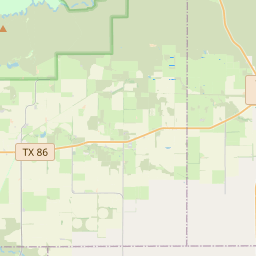Lake Theo - Folsom Bison Kill Site







Stone tool fragments were discovered in 1965 and 1972 on the shores of Lake Theo, named for former landowner Theodore Geisler. Archeological testing in 1974 revealed a campsite and bison butchering and processing area dating back to the age of Folsom man, between 10,000 and 12,000 years ago. Projectile points and scraping tools were found at a depth of four feet, along with over 500 bones from an extinct type of bison. Ponds in Holmes Canyon, now covered by Lake Theo, probably attracted prehistoric men to this area. (1978)
As one of the most visible programs of the Texas Historical Commission (THC), historical markers commemorate diverse topics in Texas history, including: the history and architecture of houses, commercial and public buildings, religious congregations, and military sites; events that changed the course of local and state history; and individuals who have made lasting contributions to the state, community organizations, and businesses.
The city of Austin, the state capital, is known as the live music capital of the world. It is home to many music festivals, including South by Southwest (SXSW) and the Austin City Limits Music Festival.
During the late 19th and early 20th centuries, Briscoe County experienced a boom in cattle ranching. The arrival of the railroad in the area in the 1880s further facilitated the growth of the industry, leading to an increase in population and economic prosperity. Ranchers from all over the state flocked to Briscoe County, establishing large cattle ranches and contributing to the region's reputation as a major center of the Texas cattle industry.
The county also played a significant role in the development of the oil and gas industry in Texas. In the early 20th century, oil was discovered in Briscoe County, leading to the establishment of oil wells and the subsequent growth of towns such as Silverton. The oil boom brought new economic opportunities to the area and attracted a diverse population, including workers from other parts of Texas and beyond.
Today, Briscoe County continues to be an important agricultural center, with cattle ranching, farming, and oil and gas production as its primary industries. Its rich history, shaped by the contributions of Native Americans, cattle ranchers, and oilmen, has left a lasting legacy. The county's natural beauty, including its canyons and wide open spaces, attracts visitors who come to enjoy outdoor activities such as hiking, fishing, and birdwatching.
Briscoe County Timeline
This timeline provides a glimpse into the major events and milestones that have shaped the history of Briscoe County, Texas.
- 1860 - Briscoe County is established by the Texas legislature.
- 1892 - Silverton becomes the county seat of Briscoe County.
- 1902 - The Briscoe County News begins publication.
- 1926 - The Texas Technological College Stock Farm is established in Briscoe County.
- 1930 - Briscoe County experiences a decline in population due to the Dust Bowl.
- 1960s - Oil and gas production becomes an important industry in Briscoe County.
- 1980s - Briscoe County becomes known for its beef cattle industry.
- 2000s - Wind energy development begins in Briscoe County.